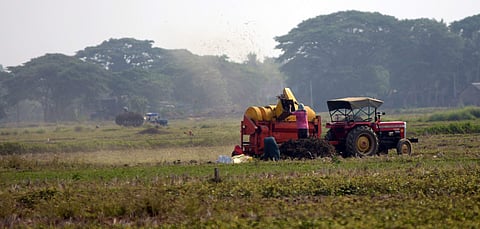

BHUBANESWAR: With farmers not happy with the existing crop-cutting experiments (CCEs) for yield estimates of paddy crops for insurance under Pradhan Mantri Fasal Bima Yojana, the state government has decided to go for technology intervention to overcome various limitations in the current system of crop yield estimation in the insurance units.
It has been decided at a recent meeting of the state-level coordination committee on crop insurance that the cooperation department will sign a tripartite MoU with the National Remote Sensing Centre (NRSC), Hyderabad and Odisha Remote Sensing Application Centre (ORSAC) for implementing an alternative model of yield loss indemnity payment to affected farmers.
A similar tripartie MoU will be signed among Odisha State Disaster Mitigation Authority (OSDMA), ORSAC and NRSC on mapping of crop inundation in flood and cyclone-affected areas, sources in the cooperation department said.
Growing concern about the quality of the yield data of the crop-cutting experiments is limiting the effectiveness of crop insurance as was evident during determination of crop loss in 2021-22 kharif season. The need for improving the yield estimates using remote sensing and other technologies is well recognised and the research in this direction has gained momentum, the sources added.
Crop health factor (CHF), a new measure of crop loss, is a composite index of crop performance incorporating multiple physical and biophysical parameters related to crop health. It is a quantitative measure of crop health and its overall performance.
Research findings that established the rationale for adopting CHF are objectively measured and yield-proxy-index is a better choice than subjectivity-prone manual yield estimates to design crop insurance contracts.
Satellite and weather data sets permit more objective assessment of crop health at moderate scales and composite indicators are effective to simplify complex processes into easily understandable simple comparisons. Index-based insurance schemes are superior to conventional indemnity-based schemes using measured losses, and hence these schemes are widely recognised for their successful implementation.
After detailed deliberation the committee decided to use both CCE and CHF data for assessment of yield loss and settlement of claims. A composite loss assessment formula will be designed from this year taking into consideration both CCE and CHF data with weightage of 70:30.ORSAC has been asked to submit a detailed project proposal to the cooperation department on use of remote sensing data for yield estimation, the sources said.